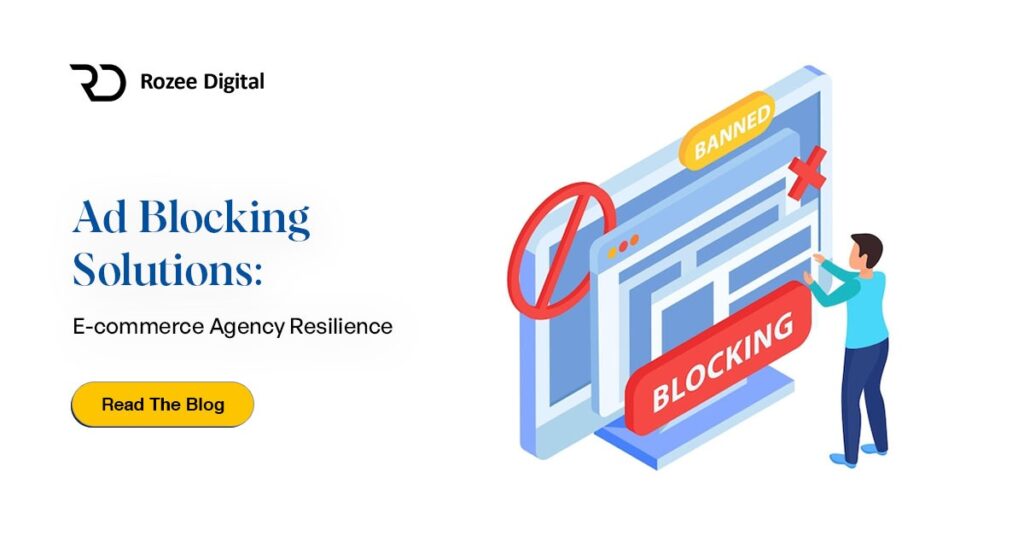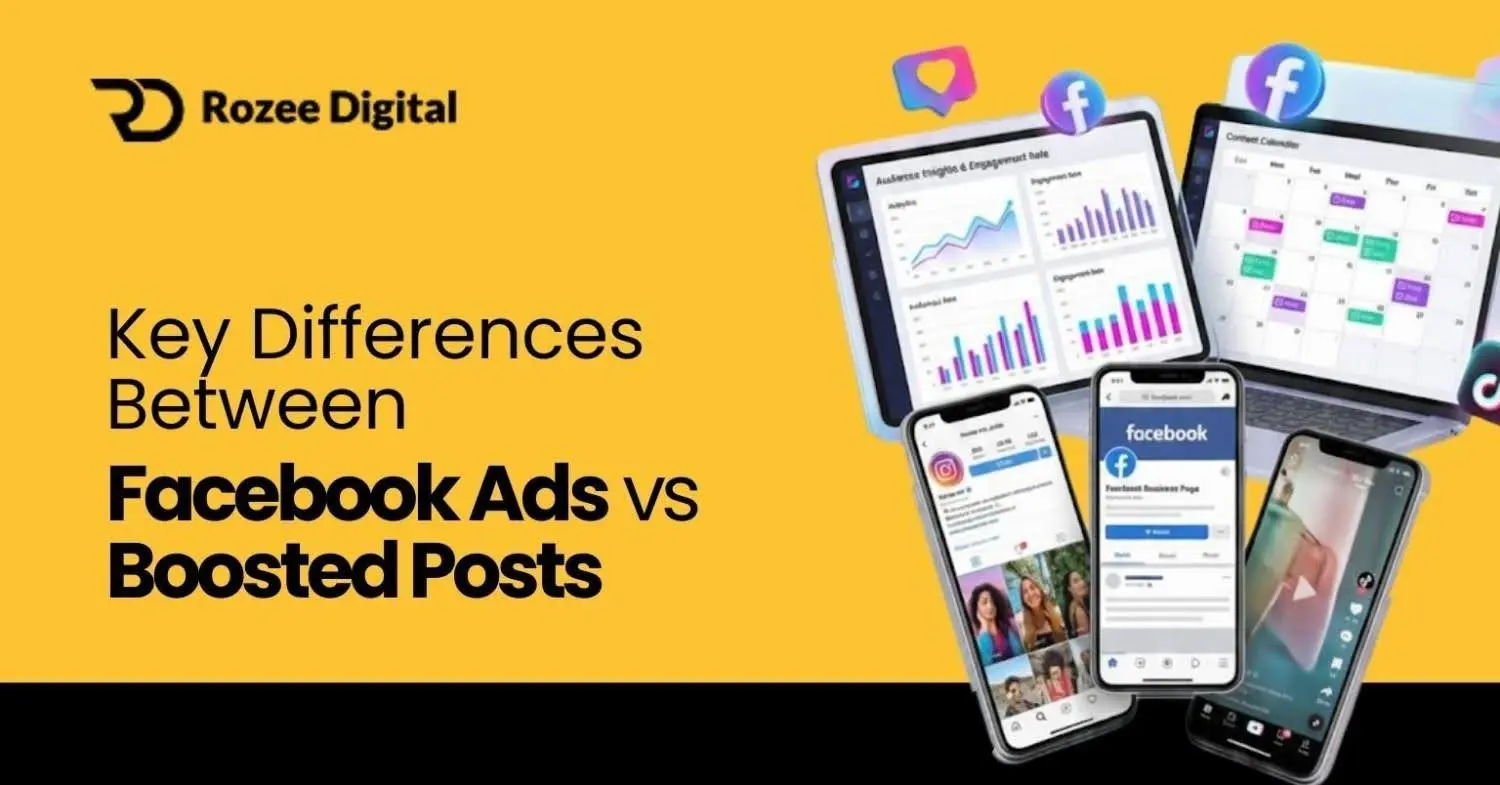In today’s digital age, the rise of ad blockers poses a significant challenge for e-commerce agencies. These tools, designed to enhance user experience by eliminating intrusive ads, inadvertently disrupt the flow of online marketing strategies. As an e-commerce agency, it’s crucial to adapt and develop resilience against the growing use of ad blockers. In this post, we’ll explore effective ad blocking solutions to help your agency stay competitive and maintain revenue streams.
What is Ad Blocking: How Does It Work?
Before diving into solutions, it’s essential to grasp the mechanics of ad blocking. Ad blockers function by analyzing the blocking architecture of websites, identifying and preventing the loading of content recognized as advertisements. They also block scripts that advertising networks use to track a user’s behavior across thousands of websites, making it harder for marketers to target and retarget potential customers.
These tools work across multiple layers:
- Network-wide ad blocking: Implemented at the network level, this type of blocking is often deployed by enterprises to enforce ad-free environments across all connected devices.
- Enterprise-wide ad blocking: Large organizations use this approach to block web advertising on every device within the network, ensuring a clean browsing experience and added security.
- Browser-based ad blocking: Individuals can install browser extensions like Adblock Plus, which block ads on a single device.
The Impact of Ad Blocking on E-commerce
The rising use of ad blockers has significant implications for e-commerce agencies. With ad blockers usage statistics indicating that a substantial portion of internet users employ these tools, agencies must adapt to maintain visibility and revenue. Key impacts include:
- Blocked advertising: Traditional banner ads, pop-ups, and video ads are often the primary targets of internet blockers, leading to reduced visibility.
- Skewed data: As adblock software prevents tracking, the accuracy of analytics is compromised, making it difficult to measure campaign performance.
- Security concerns: Some ad blockers, like Adblock Suite, double as anti-malware tools, blocking potentially harmful content but also essential ads, further complicating the advertising landscape.
Ecommerce Agencies Overcoming the Impact of Ad Blocking on E-commerce
Ad blocking presents significant challenges for e-commerce agencies, but several strategies can help mitigate its impact:
1. Adapting Advertising Strategies
- Shift to Non-Intrusive Ads: Use native advertising and sponsored content that are less likely to be blocked and blend seamlessly with user content.
- Diversify Channels: Focus on channels like email marketing and social media advertising that bypass ad blockers entirely.
2. Enhancing Data Collection
- Use Alternative Tracking Methods: Employ server-side tracking and other tools that are less likely to be blocked by adblock software.
- Leverage Adblock Detection: Implement scripts to detect ad blockers and adjust campaigns accordingly, such as requesting whitelisting or offering alternatives.
3. Addressing Security Concerns
- Work with Reliable Ad Networks: Collaborate with ad networks that prioritize user safety while ensuring essential ads are not blocked.
- Implement Anti-Adblock Solutions: Use tools that detect and bypass ad blockers, ensuring essential scripts and ads are still delivered.
How Can Agencies Detect if Users Are Using Ad Blockers?
Detecting ad blockers is crucial for e-commerce agencies that rely on online advertising to drive traffic and generate revenue. When a user has an ad blocker enabled, the agency’s ads may not display, and tracking scripts may be blocked, leading to incomplete data and reduced marketing effectiveness. Here’s how agencies can detect ad blockers and respond effectively:
1. Implementing Adblocker Detection Scripts
Agencies can use adblocker detection scripts on their websites to identify when users have ad blockers enabled. These scripts work by checking if specific elements on a webpage, such as ad banners or tracking pixels, are being loaded or blocked. If the script detects that these elements are missing or altered, it can conclude that an ad blocker is in use.
For example, a detection script might attempt to load a “bait” ad, which is a small, invisible element that resembles a typical ad. If the bait ad is blocked, the script identifies the presence of an ad blocker.
2. Adblocker Stands
An adblocker stand refers to a system or service that helps websites identify and manage users who are blocking ads. This can include both detection tools and user interaction modules, such as messages or prompts that appear when an ad blocker is detected. These stands can be part of a broader ad management platform that integrates seamlessly with the website’s existing infrastructure.
3. Responding to Adblock Detection
Once an ad blocker is detected, the agency has a few options:
- Requesting Whitelisting: The website can display a polite message asking the user to whitelist the site. This message might explain the importance of ads for supporting free content or maintaining the website. Whitelisting allows ads from a specific site to bypass the ad blocker, ensuring they are displayed.
- Offering Ad-Free Alternatives: For users who prefer to keep their ad blockers enabled, the agency might offer a subscription-based model that provides an ad-free experience. This approach can turn ad-blocking users into paying customers while still generating revenue for the agency.
- Providing Educational Content: Educating users on how ads contribute to the content they enjoy can sometimes encourage them to disable ad blockers for specific sites. This can be done through a brief explanation that appears when an ad blocker is detected.
4. Monitoring and Adjusting Strategies
After implementing detection and response strategies, agencies should continuously monitor the effectiveness of these efforts. This includes tracking how many users whitelist the site, how many opt for an ad-free subscription, and how these actions impact overall revenue and user experience. Agencies may need to adjust their messaging or offer different incentives based on user feedback and behavior.
Adapting to Ad Blockers: Strategic Solutions
To combat the effects of adblock software, e-commerce agencies need to evolve their strategies:
- Implement non-intrusive ad formats: Ads that blend seamlessly with content, like adblock advertising, are less likely to be blocked. This approach includes native advertising and sponsored content, which align with user expectations and are less intrusive.
- Invest in alternative channels: Email marketing and social media advertising offer direct communication with customers, bypassing ad blockers entirely. These methods ensure that your message reaches the audience without being filtered out.
- Enhance SEO efforts: Focusing on organic search traffic by optimizing content for search engines can help reduce reliance on ads. By understanding how many people use ad blockers, agencies can tailor their strategies to prioritize non-blocked channels.
Ad Blocking Solutions for E-commerce Agencies
E-commerce agencies can adopt several strategies and tools to combat the effects of ad blocking and maintain effective online advertising. Here are key solutions:
1. Implement Adblock Detection Tools
- Detection Scripts: Use scripts that detect when a user has an ad blocker enabled. These tools can trigger a response, such as requesting the user to whitelist the site or offering an alternative experience.
- Adblocker Stands: Platforms or services that help websites manage and detect ad-blocking users, providing insights and response options.
2. Offer Ad-Free Subscriptions
- Premium Content: Provide users with the option to access an ad-free version of your site through a subscription or membership model. This approach not only bypasses ad blockers but also generates an additional revenue stream.
- Freemium Models: Offer basic services for free with ads, and premium, ad-free content for a fee, catering to different user preferences.
3. Focus on Non-Intrusive Advertising
- Native Advertising: Create ads that integrate smoothly into the content of your site, matching its style and format. These ads are less likely to be blocked as they are less disruptive.
- Sponsored Content: Develop content that is valuable and informative while subtly promoting a product or service. Sponsored posts, articles, and videos are often seen as content rather than traditional ads.
4. Diversify Advertising Channels
- Email Marketing: Since emails aren’t affected by ad blockers, building a robust email marketing campaign can effectively reach your audience directly.
- Social Media Ads: Advertise on social media platforms like Facebook, Instagram, and LinkedIn, where ads are integrated into users’ feeds and are less likely to be blocked.
- Influencer Partnerships: Collaborate with influencers who can promote your products directly to their followers, bypassing traditional ad formats.
5. Enhance User Experience
- Improve Site Design and Speed: By offering a smooth, fast-loading, and user-friendly site, you can reduce the frustration that often leads users to install ad blockers.
- Transparency in Advertising: Be clear about how ads support your content, and provide users with reasons to support your site by not using ad blockers.
6. Use Anti-Adblock Solutions
- Anti-Adblock Software: Deploy software that either bypasses ad blockers or displays alternative content when an ad blocker is detected. These tools can also adapt the site’s content to ensure critical information and ads are delivered.
- Server-Side Ad Insertion: Implement server-side ad insertion techniques, where ads are integrated directly into the content before it reaches the user’s browser, making it harder for ad blockers to detect and block them.
7. Leverage Data and Analytics
- Alternative Analytics Tools: Use analytics tools that are not affected by ad blockers, such as server-side tracking, to maintain accurate data on user behavior and ad performance.
- A/B Testing: Continuously test different ad formats, content strategies, and user interactions to determine which approaches are most effective in an ad-blocked environment.
Addressing Security Concerns: The Role of CISOs
As ad blockers increasingly incorporate malware protection, it’s crucial for Chief Information Security Officers (CISOs) to be involved in managing ad-blocking strategies. Block CISOs can ensure that while ads are delivered, they do not compromise security. By working with adblock suite malware detection, CISOs can strike a balance between effective advertising and maintaining a secure online environment.
Conclusion: Building Resilience in the Face of Ad Blocking
Ad blockers present a growing challenge for e-commerce agencies, but with the right strategies, it’s possible to adapt and thrive. By understanding the blocking architecture, leveraging adblock software detection, and investing in alternative marketing channels, e-commerce agencies can ensure their marketing efforts remain effective.
Enterprise-wide ad blocking and network-wide ad blocking are here to stay, but with proactive measures and a focus on non-intrusive advertising, agencies can continue to reach their audiences and maintain robust revenue streams.
FAQs: Ad Blocking Solutions for E-commerce Agencies
1. What is ad blocking, and how does it work?
Ad blocking is the process of preventing advertisements from being displayed on websites. Adblock software works by identifying and blocking scripts or content recognized as ads, often through a blocking architecture that analyzes the webpage’s code. This includes preventing tracking scripts used by advertising networks to monitor user behavior across various websites.
2. How does ad blocking impact e-commerce agencies?
Ad blocking can significantly reduce the visibility of online ads, which in turn can lead to decreased traffic and revenue for e-commerce agencies. Additionally, ad blockers can distort analytics data by blocking tracking pixels, making it harder to measure campaign effectiveness. Agencies also face security challenges, as some ad blockers, like Adblock Suite, include malware protection that may block essential scripts.
3. What are the common types of ad blocking?
There are several types of ad blocking:
- Network-wide ad blocking: Implemented at the network level, often in corporate environments, this blocks ads across all devices connected to the network.
- Enterprise-wide ad blocking: Used by large organizations to block ads on all devices within their network, enhancing both security and user experience.
- Browser-based ad blocking: Individuals can install browser extensions like Adblock Plus, which block ads on a single device.
4. How many people use ad blockers?
The usage of ad blockers has been steadily increasing, with millions of users globally employing these tools to improve their browsing experience. Recent ad blockers usage statistics show that a significant portion of internet users, particularly in developed markets, regularly use ad blockers.
5. What are some effective strategies for overcoming ad blocking?
To combat ad blocking, e-commerce agencies can:
- Create non-intrusive ads: Use native advertising and other formats that blend into the content, reducing the likelihood of being blocked.
- Invest in SEO: Enhancing organic search traffic can help decrease reliance on ads.
- Diversify marketing channels: Channels like email marketing and social media ads can bypass ad blockers altogether.
- Implement adblocker detection: Use tools to detect when users have ad blockers enabled and encourage them to whitelist your site.
6. Can ad blockers pose security risks?
While ad blockers are generally used to enhance security by blocking potentially harmful ads, they can sometimes block legitimate content. This is particularly true for adblock suite malware tools that include extensive security features. E-commerce agencies need to work with their CISOs to ensure that ad blocking does not inadvertently compromise necessary functionality.
7. How can agencies detect if users are using ad blockers?
Agencies can implement adblocker stands or detection scripts on their websites to identify users who are using ad blockers. Once detected, the agency can take steps to either request that users whitelist the site or offer alternative ad-free options, such as subscription services.
8. What are the alternatives to traditional online advertising?
In response to the growing use of ad blockers, agencies are turning to alternatives like:
- Content marketing: Providing valuable content that attracts users organically.
- Influencer marketing: Leveraging influencers to promote products in a way that bypasses traditional ad formats.
- Affiliate marketing: Collaborating with affiliates who promote products on platforms where ads are not blocked.
9. How should CISOs approach ad blocking within an organization?
CISOs should work to balance the need for security with the effectiveness of advertising. This includes ensuring that adblock software does not inadvertently block essential scripts or compromise the user experience. By working closely with marketing teams, CISOs can help implement secure, non-intrusive advertising strategies.
10. What role does adblocker software play in the future of e-commerce advertising?
As the use of adblocker software continues to rise, e-commerce agencies will need to evolve their strategies to remain effective. This includes focusing on non-intrusive ad formats, improving SEO, and exploring new channels that are less affected by ad blockers. The future will likely see a greater emphasis on quality content and direct marketing methods that can bypass ad blockers altogether.





